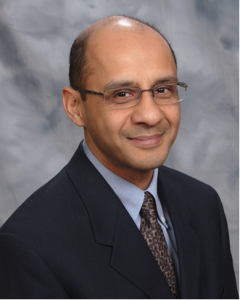Quantum Cascade Laser Technology and Applications
3 Forbes Road
Lexington, MA 02421
USA
Photonics Society – 6:30PM, Thursday, 10 September
Quantum cascade laser technology and applications
Anish Goyal – Block Engineering, Marlborough, MA.
Quantum cascade lasers (QCLs) are a class of semiconductor lasers that operate in the mid-infrared (MIR) portion of the optical spectrum. The MIR ( ~ 2.5 – 14 m) is a very important frequency range because it contains the vibrational/rotational modes of almost all molecules. MIR spectroscopy is, therefore, a fundamental method for the detection and identification of most chemicals regardless of whether they are in solid, liquid, or gaseous form. The invention and development of the QCL as a practical MIR laser has enabled the application of MIR spectroscopy in configurations (and with a level of performance) not previously possible. Since their invention in 1994, the output power, efficiency, wavelength coverage, and reliability of QCLs have significantly advanced and they are now finding their way into fielded systems. Block Engineering has pioneered the development of miniaturized external-cavity QCLs that can very rapidly tune across a large wavelength range. Today, Block’s spectrometers based on these lasers are being used in a variety of commercial and military applications. In this talk, I will briefly review the status of QCL technology and then discuss the near- and longer-term opportunities to apply this technology to chemical sensing.
Link to article: http://proceedings.spiedigitallibrary.org/proceeding.aspx?articleid=2300150
Anish Goyal is currently the VP of Technology at Block Engineering in Marlborough, MA. Previously, he was at MIT Lincoln Laboratory (in the Laser Technology and Applications Group), Polaroid Corporation, AT&T Bell Labs, and the Jet Propulsion Laboratory. He received his PhD from the University of California, Santa Barbara, and BS from Rensselaer Polytechnic Institute in Electrical and Computer Engineering. Also, he co-authored the book chapter “Active mid-infrared reflectometry and hyperspectral imaging” in Laser-Based Optical Detection of Explosives (CRC Press, 2015) and has served as an Associate Editor for IEEE Journal of Quantum Electronics.
This meeting begins at 6:30 PM Thursday, September 10th, 2015 and will be located 3 Forbes Road (an MIT Lincoln Laboratory facility), Lexington, MA, 02420. The meeting is free and open to the public. All are welcome. Prior to the seminar there will be social time and networking from 6:30 – 7:00PM. Dinner will also be provided. The seminar will begin at 7:00PM. For more information contact Jade Wang, Boston IEEE Photonics Society Chapter chair at jpwang@ll.mit.edu, or visit the Boston IEEE Photonics Society website at www.bostonphotonics.org.
Directions to Forbes Rd Lincoln Laboratory: (from interstate I-95/Route 128)
Take Exit 30B onto Marrett Rd in Lexington – Merge into left lane
Make the first Left onto Forbes Rd.
Proceed straight through the small rotary and enter the parking lot.
The entrance is on your right.
To assist us in planning this meeting, please pre-register at http://www.ieeeboston.org/Register/

